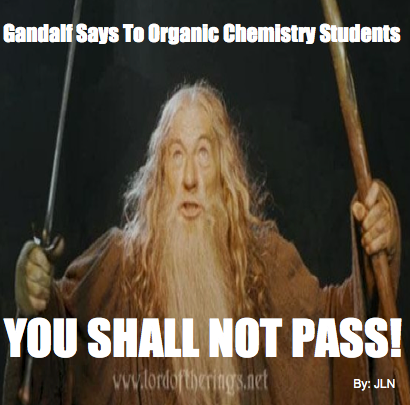
How is this not the funniest joke you've ever heard?!?!
So. This enlightening blog post discusses functional groups. If you're like me, and just drew a blank on what that is... well. How very unfortunate.
Anyways... Here we're gonna discuss 5 of the functional groups, which are organic compounds containing more than just C and H. Getting more fo your monnaayyy. But technically we're only talking about 4... because halide and nitro compounds apparently count as the same group. huh.
Halides
Fluoro (F)
Chloro (Cl)
Bromo (Br)
Iodo (I) [i know iodo sounds like dodo... but its really not...]
Nitro
Nitro (NO2)
Not that hard, right? Good 'cause you have to memorise those prefixes!
So these halides and nitro compound thingies can attach to alkanes/enes/ynes. and you add a number (di, tri, tetra, etc) in front of the functional group if more than one of them portrudes off the carbon chain.
For example...
3-bromo-butane looks like...
Well this is awkward... I cant figure out how to rotate it LOL
whatever 2,3-diiodopentene looks like...
and TADA. not bad, right?

Fun fact of the day: Did you know alcohol is poisonous? hmm.
Alcohols are the next functional group, which is generally easy to identify. Why, you ask? Well, my furry friend, because all alcohols contain a hydroxide!! (OH, for you chemistry failures. And no not OOHHH I get it I mean OH - the chemical formula for hydroxide)
So when naming alcohols, you look at the longest chain, and then add OL to the ending.
That is... Ethane with an OH attached would become ethanOL.
here is a pretty picture of of ethanOL
Note: If there is no number in front of the alcohol, then we assume that the hydroxide is attached to carbon #1
Say you have 2 OHs attached you your ethane. So you'd need a DI (chemistry..get it DIE CHEMISTRY) somewhere in there. But obviously chemists are too meanyfacey to put it in the logical spot, so instead our ethane with 2 OHs would become ethaneDIOL. duh. but not.

The last couple functional groups are very similar, so make sure you know which is which.
Aldehydes:
-have a double bonded oxygen attached to the beginning/end of the chain
-end with AL (do not confuse the ending with that of an alcohol!)
Ketones
-have a double bonded oxygen attached to one of the carbons in the middle of the chain
-end with NONE (eg pentaNONE, propaNONE)
EXAMPLE:
Now... Wheeeeeerreee is the double bonded oxygen....
Well waddya know?! It looks like it's at the end of the chain!! and since we start from the side with the double bonded oxygen on it... ^that chain would be named propanAL.
WEEEEEEEEEEEEE




No comments:
Post a Comment